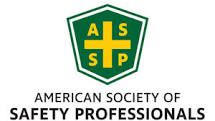How to evaluate an online safety learning system | FIRST, VERIFY
An online safety learning system can range from ones that are very simple and have very few features—perhaps little more than the ability to allow employees to view and complete training—to systems that are much more robust and offer many more features, including possibly some you may never use.
As a result, you’ll want to find a system that matches your company’s needs. From the ease of use to how comprehensive a program is, here are a few key capabilities that a robust online safety learning program should offer:
User Experience
There’s probably nothing more important for a safety learning management system than for it to have an intuitive and simple user experience. This is true for employees and for those who will perform administrative roles when using the system.
Workforce organization tools
Being able to organize the employees in your workforce to make safety training assignments and reporting easier and more specific can be very helpful.
Training content tools
It’s important to know what a learning management system will let you do with training content. Can you import your content, and if so, what types? Does it include tools you can use to make your online training activities? And how does it handle updating activities to create new versions? Does it provide you the option of translating your content to other languages for global consumption?
Inbuilt capabilities
Safety training is often compliance-based, and because those compliance requirements differ from worker to worker and include things like due dates and recurring training needs, you’ll want to consider the training capabilities of any safety learning management system.
Online training delivery
Online training delivery includes some variables such as mobile compatibility for the online training or offline viewing of the training content.
Credit for completed training
When it comes to providing credit to workers for completing training, you’ll want to investigate how the safety training platform automatically provides credit for completed training, what your options are for manually granting credit for completing training, what you can do with mobile devices, whether or not the system can capture signatures and integrate with your workplace’s card key system, and more.
Reporting
Reporting is one of the most important aspects of a learning management system. Also, studies show that dissatisfaction with reporting capabilities is one of the most common reasons why companies quit using one learning management system and begin using another.
A cohesive, site-specific, well-run contractor online safety orientation program is the foundation for risk mitigation. Unfortunately, very few safety teams have the time or resources to fashion and facilitate a program that makes sense for each site and every type of contractor. FIRST, VERIFY’s online safety orientation program provides a user-friendly, customizable, feature for hosting your safety orientation modules.
Also, many organizations have found that when they invested in comprehensive online safety orientations like the one FIRST, VERIFY provides, their employees noticed that investment, appreciated it, and began to take a more active role in the safety culture at work. And that’s definitely something!
You might also like






